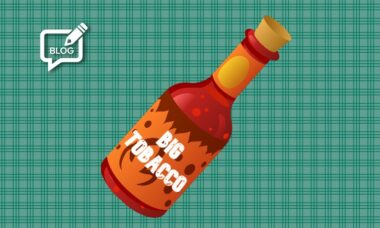 November will mark ten years since Iqos was launched in Japan. And as the third-quarter results announced by Philip Morris International (PMI) show, the last ten years have been quite the story in global brand-building for the product.
November will mark ten years since Iqos was launched in Japan. And as the third-quarter results announced by Philip Morris International (PMI) show, the last ten years have been quite the story in global brand-building for the product.
Iqos is the dominant brand in the heated tobacco space and looks like it will continue to remain so for the foreseeable future. It remains the dominant brand in effectively every market it is involved in – even in cases like Japan where there is a nationalistic domestic competitor, such as Ploom from Japan Tobacco.
And now it finally looks like it will enter the US market, having officially launched its anticipated pilot programme in Austin, Texas. Or perhaps not. There is speculation that PMI may still be biding its time in some regard. This is because the pilot is still only allowing people to join a waiting list, and Iqos has not received a premarket tobacco product authorisation (PMTA) from the US Food and Drink Administration (FDA) for its Iluma product.
So rather than launch with its older FDA-approved product, PMI is doling out announcements to string along attention until it receives its PMTA marketing granted order (MGO) for Iluma.
Regardless, the attention PMI is receiving for its Iqos product line is surprising – given the array of other nicotine alternatives already available on the US market. The success in generating awareness for Iqos can likely be put down to – at least initially – the tie-in with existing Marlboro brand capital.
Missing ingredient
It then begs the question why PMI was unable to do anything similar with a vaping brand. Outside the impact of the Marlboro tie-in, PMI did significant work in promoting Iqos through such actions as targeted social media activity, premium brand retail experiences and significant lobbying to achieve regulatory approval for the product – including milestone achievements like convincing the FDA to grant it reduced-risk status, something no vaping product has ever achieved.
It seems silly to think something similar could not be achieved with a vaping brand if companies like PMI were really willing. It lends further weight to the argument that vaping products were never really a great fit with the overall strategy, logistical set-up and product mix of tobacco companies.
But that being said, nicotine pouches share many of the same seeming drawbacks as vaping from a tobacco company set-up. They are made using a derived nicotine – rather than simply using tobacco, they require a whole different set of manufacturing, packaging and distribution machinery and assets, and they rose up largely independent of tobacco company research and development.
Yet they have been more readily embraced by tobacco companies, with the result that brands such as Zyn, Velo and Nordic Spirit arguably already generate more brand awareness than their tobacco company vaping brand equivalents.
Whether this is down to a lack of appetite when it comes to vaping, some secret sauce when it comes to heated tobacco or is in fact an entirely coincidental organic result is probably only known by a few strategic leaders. But the results are undeniable. Heated tobacco and pouches have, overall, been more successful than vaping when it comes to tobacco company brand-building.
– Freddie Dawson TobaccoIntelligence staff
Image: OpenClipart-Vectors (bottle)







